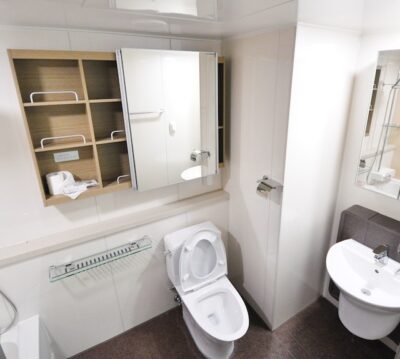Did you know that new hires have a productivity rate of around 25 percent during their first month at the new job throughout the onboarding process? One of the best ways to help a new employee get up to speed when working at your company is to invest time and thought into creating a new hire checklist and an employee onboarding template.
If you’ve ever been a new employee then you’ve experienced that buzzing, head-spinning feeling that comes with trying to learn vast amounts of new information and skills while also checking off the items on your onboarding checklist. It seems impossible to keep up with at times.
The good news is that there are things that you can do in order to make life at their new job a little easier for new hires, and you’re in the perfect place to learn more about creating an employee onboarding template. Keep reading this article to learn more on how to get started with your onboarding checklist today!
Steps for a New Hire Onboarding Process
There are certain steps that you need to take if you want your new hires to get up to speed and feel welcomed at their new place of employment. You can’t just throw them into the fire and expect them to enjoy their new work environment and job tasks. Here is a closer look at what to do once you’ve hired the perfect candidate.
1. Make the Hire Official
First, you’ll need to make the hiring official with your Human Resources department. You won’t be able to move forward with the process of bringing your new employee into the team until after the hire is made official by the HR department at your company.
2. Conduct a Background Check
You’ll also want to make sure that you conduct a background check on the individual that you’re looking at hiring. If you’re hiring this person to work in a position that has access to important or sensitive information then you need to make sure that they’re a decent and trustworthy person.
3. Go Over Job Basics
After that is completed, you’ll want to get in touch with the new employee and go over the basics of the job with them as well as their new work schedule. Give them a timesheet with their work schedule for the first week at your new company. Make sure they know where to park and what to wear.
4. Go Over Job Duties
You should also make sure that you email the new employees information about their job duties and expectations while making yourself available to answer any questions that new hires have. It is your job to let your new employees know how they fit into the organization and how their job brings value to the team.
5. Handle New Hire Forms
It is also important that you handle all of the forms that the new hires need to fill out in order to work for your company. The best approach is to email them these documents and get them to start on them before their first day at the new job. You’ll save yourself and them a lot of valuable time if you knock this step out before the first day on the job.
6. Conduct Team Introductions
Once the new hires have their first day at your company, you should arrange an introduction with the existing employees and team members. This is the best way to introduce these new hires to the culture at your business and start helping them find their place within the organization.
It is also a great idea to give the new hire a tour of your office facilities so that they know where everything is. Introduce them to any key personnel or employees that you run into during this tour as well.
7. Get Their Workspace Ready
There are a number of things to do when it comes to getting a new hire’s workspace ready to go. You need to make sure that their work computer is set up with any and all software programs that they’ll need in order to do their job. Make sure that their desk is clean beforehand and get them any access codes that they’ll need.
It is also a great idea to get business cards for them if they’ll be meeting with clients in person.
8. Start the Training Process
The last step of the onboarding process is getting started with training your new employee on their job duties. Schedule training sessions in advance and make sure that you’re setting them up with qualified and helpful trainers.
New Employee Onboarding Template
There is also an employee onboarding template that you should try to follow after the first day passes. This template will help you to keep the new hires on track throughout the training process to make sure that they’re not overwhelmed while also getting them closer to being completely up to speed with everything.
First Day
One of the most important things that you need to have on your employee onboarding template is providing a thorough introduction to the workplace, fellow employees, and job duties for the new hires. You should also go over expectations and workplace conduct with the new employee.
To do this, provide your new hires with a copy of the company handbook so that they know all of the rules in the workplace. From there, you’ll want to get their computer set up so that they’re ready to go with training and learning the ins and outs of their job.
First Week
It is a great idea to start the new hires out with simple tasks that are relevant to the jobs that they’ll handle once they’re fully onboarded at your company. It is also vital that you touch base with them on a daily basis to check in on how everything is going and answer any questions that they might have like they do at this company.
This is also the stage of the onboarding process where you want to start setting goals for your new hires. Give them something to work towards that will help them gain confidence and a feeling of accomplishment. Now is also a great time to make sure that your new hire’s equipment is working in the proper way for them to do their job duties.
First Month
A big part of the first month of the onboarding process according to the employee onboarding template is making sure that you’re checking in on a regular basis. You need to make sure that you’re choosing an employee onboarding template that involves getting consistent feedback from your new hires to learn about what you can do differently to enhance their experience.
Now is also the perfect time to review the past assignments that you’ve given to your new hires and come up with new assignments for them to handle over the coming weeks. You should choose an onboarding process that comes with a schedule so that it is easier to keep the new hires on a timeline.
Make sure that you’re meeting with your new hire on a regular basis to keep them engaged and invested in becoming an internal part of your company. Employees will begin to check out if they feel that they’re not valued or seen.
First Three Months
After the first three months at the company, you should schedule the first performance review for your new employee. It doesn’t need to be a scary or formal experience but it is perfect for giving the new employee feedback on how they’re doing from a job performance standpoint.
This is also a great time to go back and look at the previous goals that you’ve set with the new employee and look at their progress towards those goals. If they’ve met those goals with success then it is a good idea to come up with some new goals for them to aim for.
First Six Months
At the six-month mark, you’ll want to schedule the first formal performance review with your new employee. Look at the previous goals of the new employee as well as their future goals while working for your company. You should also monitor their progress on their goals that are currently still going on.
Your new hires should have all of the necessary training to do their job to a professional degree and to have great success at this point in time. Make sure that you’ve answered any of the new hire’s questions and check in on their mental health.
Choose the Perfect Employee Onboarding Template for Your Business
Picking the perfect employee onboarding template might seem intimidating but there are certain things that all great businesses do when it comes to the onboarding process for new hires. Make sure that you choose an onboarding checklist that makes your new hires feel appreciated and seen. You should also make sure that the new hire checklist is ongoing for up to six months.
For more helpful and fun articles on a range of topics, check out our blog.










